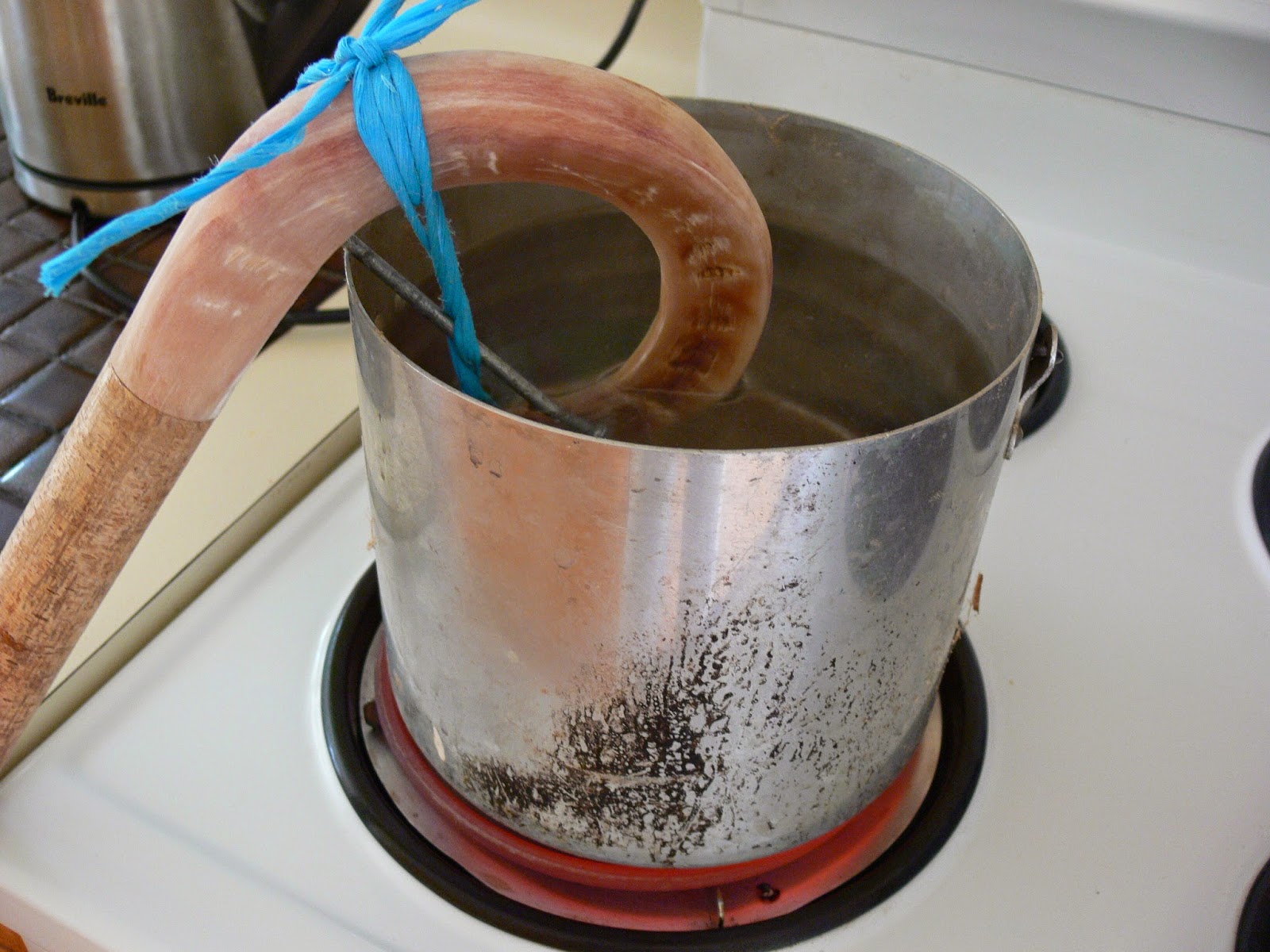By Dr Clive Dalton
The bigger and more solid the horn, the more material you have to work with and hence the better the end result. See the Border Shepherd's Stick Dressing Association website
Plain horn head
Here are some basic instructions to make a 'plain horn' stick which would be used for generally walking around the farm, or taking with you to the sale - sometimes called a 'sale stick'.
 |
The
horn as cut from the ram’s head. Note the bone core which is part of the skull
and which falls out on boiling. You can't use that bit
 |
|
Only use the solid end of the horn which comes from an old ram, best over two years old and has a second curl in the horn. A single curl will be all core bone.
|
 |
|
Decide
which is going to be the neck of the horn handle. Start rounding it into shape.
|
 |
|
Keep
removing horn to develop the round shape.
Boil
the horn for about 4-5 minutes, then hold in the vice to bend the end twist
out. Hold in position until it cools and is stable.
|
 |
Hold
the horn firmly in the vice to bore the hole for the shank spigot. Make sure
the brace is perpendicular.
 |
A
hole of 60mm deep is ideal.
 |
Cut
the spigot on the shank to fit the hole.
 |
Bore
a hole to insert a nail right down the length of the spigot and into the shank.
This is to strengthen the joint with the horn.
2Cut
the nail off and smear with plenty of a good two-pot glue.
 |
Check
the join between horn and shank has no gaps.
 |
Use
cramps to keep pressure on the join till the glue dries. Let the glue dry for
at least 24 hours. Check
the joint is good and the glue is hard.
 |
|
Use
tape to protect the bark before trimming more off the horn with rasps or glass.
Protect the bark when holding it in the vice.
|
 | ||||||
| Thin the horn to weaken the corner so it bends easily after boiling for 4-5 minutes. Keep shaping the head to remove excess horn. Horn is easier to cut when it's warm. |
 |
Put
a tourniquet on the horn to prevent it opening up when bending it in to get a nice shape. It should fit over a wrist when finished.
 |
Use
a full range of sandpaper grits to finish the head. If you find rasp marks at this stage, remove them with a bit
of glass and re-sandpaper.
 |
| Shape the end of the head to put a name or decoration on it. |
 | ||||
| Put a tourniquet on the end again to stop it going back to it's natural bend, and let it cool before removing the tourniquet. It must be in line with the shank. |
See the website for the Border Shepherds Stick Dressing Association
http://www.bsda.eu/



No comments:
Post a Comment